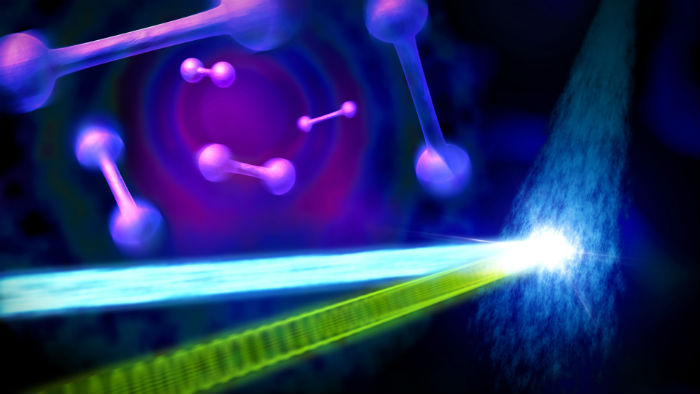
An ultrafast “electron camera” at the Department of Energy’s SLAC National Accelerator Laboratory has captured the first direct snapshots of atomic nuclei in molecules that are vibrating within millionths of a billionth of a second after being hit by a laser pulse. This feat may be able to help scientists better understand the role of nuclear motions in light-driven processes that naturally occur on extremely fast timescales.

Researchers used the UED instrument’s electron beam to look at iodine molecules at different points in time after the laser pulse. After stitching the images together, they were able to witness a “molecular movie” showing how the molecule vibrating and the bond between the two iodine nuclei stretching almost 50% – from 0.27 to 0.39 millionths of a millimeter – before returning to its initial state. One vibrational cycle took about 400 femtoseconds; one femtosecond, or millionth of a billionth of a second, is the time it takes light to travel a small fraction of the width of a human hair.
“We’ve pushed the speed limit of the technique so that we can now see nuclear motions in gases in real time,” said co-principal investigator Xijie Wang, SLAC’s lead scientist for UED. “This breakthrough creates new opportunities for precise studies of dynamic processes in biology, chemistry and materials science.”
The UED method has been under development by a number of groups throughout the world since the 1980s. However, the quality of electron beams has only recently become good enough to enable femtosecond studies. SLAC’s instrument benefits from a high-energy, ultrabright electron source originally developed for the lab’s femtosecond X-ray laser, the Linac Coherent Light Source (LCLS), a DOE Office of Science User Facility.
Learn more at SLAC.

Comments are closed, but trackbacks and pingbacks are open.